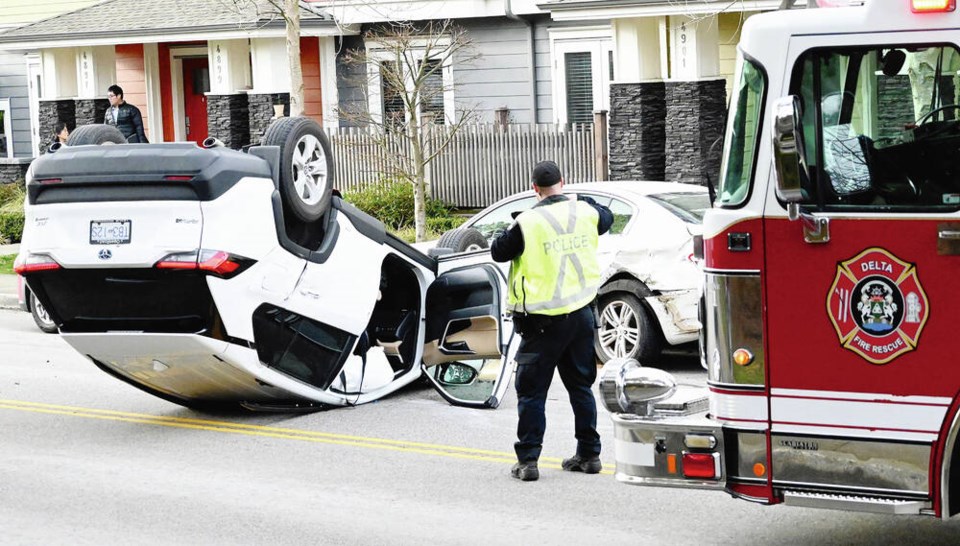As a boomer, I consider myself a “moderate” social-media user — but then, doesn’t everyone? I will admit to one glaring social-media weakness for the Instagrammer from Ukraine: @crashdashes.
These collections of dash-cam videos, posted from around the world, are head-scratching and terrifying at the same time. In fact, some days after checking out a few of them, I wonder if it’s safe to be out on the road at all.
Many of these vignettes are straightforward. A guy runs a red light and T-bones a car. Big mistake but understandable.
Then there’s the incomprehensible. A semitrailer driver blithely proceeds along a freeway at speed, seemingly without a care in the world, oblivious to the (occupied) compact car trapped under his front bumper, showering sparks and smoke everywhere.
One aspect of all of this motor mayhem really stood out for me. In many cases, drivers made things much worse for themselves by being unable to properly take last-second evasive action to avoid a crash.
These videos often show drivers spiraling out of control on highways, which appear completely dry and normal, after losing control in a lane change. Other videos show drivers zipping past other traffic that has slowed noticeably, only to plow head-on into the rear of a stopped vehicle.
We all hope it never happens to us, but being able to take the appropriate evasive action is an essential driving skill. Here’s what experts say about it.
As always, prevention is the best tactic. Keep your eyes on the road. Not just in front but behind as well, by constantly checking your mirrors. Spotting a car swerving all over the road behind you, even if it’s one or two seconds in advance, gives you a better chance of getting out of the way.
Keep your distance from other vehicles — not only back to front but on the sides, as well. Never travel in a person’s blind spot, and, as much as is possible, leave yourself an escape route, either by driving into the shoulder or into another lane.
A lower speed increases your reaction time. This is especially important in bad weather where your stopping times are greatly increased as your ability to see and react decreases.
Your main mission in a collision is to avoid the head-on crash. Impact forces are doubled in this scenario. Driving off the road is a better option even if you have to hit something because at least you’re dealing only with your own momentum.
Never swerve into an oncoming lane to avoid a head-on crash. It’s likely there will be other cars coming at you and you will have just avoided one head-on crash for the sake of another. The other problem is that the oncoming driver is likely to swerve to the right and still be in your path.
Brake hard but keep steering. The longer your tires are gripping asphalt or concrete the better. Gravel or grass on the side of the road offer much less friction in stopping.
If you must go off the road, keep going as straight as you can. Oftentimes, drivers avoid the collision but then roll over in the median or shoulder because they’ve turned the wheel too sharply. The tire digs into the soft surface, flipping the vehicle over.
This applies even for water-filled ditches. Going straight in and remaining upright is way better than being belted in but upside down as water fills the car.
Avoid missile lock. This is the tendency of the brain to lock in on the exact thing you are trying to avoid. Focus on maintaining control and looking for an escape route.
The toughest question around taking evasive action is whether to swerve or brake. The unfortunate answer is: It depends.
Generally, braking is the best option. Less speed and less impact are always best. But sometimes it’s too late. Swerving is the second choice and if it is unavoidable, steering manoeuvres should be as minimal as you can make them, especially at speed.
Experts seem to agree that swerving for pedestrians and cyclists is the better choice — in other words, life over property.
In @crashdashes, you can see plenty of incidents where a simple but abrupt lane change results in disaster because drivers have over-steered the car, kept their foot on the gas and simply lapsed into a panic as their car flails all over the road.
Anti-lock braking makes it possible to brake and swerve but braking still remains the best option.
Most driving schools offer a defensive driver’s module. They are well worth it. Gaining evasive driving skills and understanding your own abilities in an emergency are critical for good drivers.
>>> To comment on this article, write a letter to the editor: [email protected]



